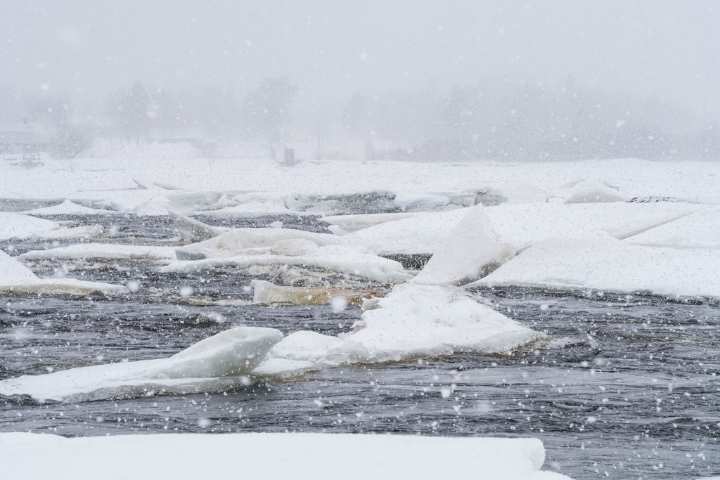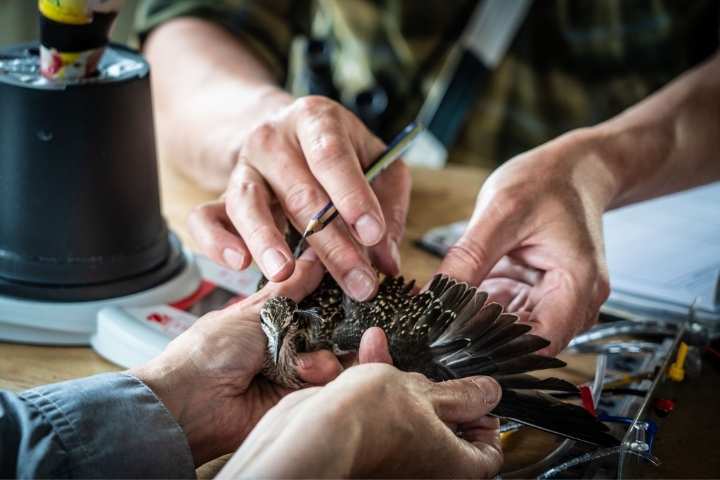Tornio Valley Nature
In Tornio Valley nature is never far away. The beautiful region is both verdant and arctic: the riverbank with its rapids and meadows combine here with forests and a magnificent archipelago. The fabulous midnight sun and amazing northern lights have always attracted visitors from near and far. Here you can enjoy the purest air in the world. Nature and its silence are something that more and more people long for and seek.
We have plenty of room to roam, so enjoy nature. But remember to respect it and live on its terms. In both countries there is a concept called Right of public access or Everyman´s Right. This is a unique freedom to roam freely, but with this right comes responsibilities. Keeping this in mind, pack your bag and put your hiking boots on, it’s time to explore and take it all in. Our land is mostly covered by forest and water, so even social distancing is naturally taken care of.

Tornionjoki River
The mighty Tornionjoki or Väylä, as the locals like to call it, is the largest free-flowing river in Europe. It originates from Lake Tornio on the Swedish side, from where it descends 470 kilometers to the Gulf of Bothnia. The river is traditionally an important route as it formed the primary travel route in the area until the 1830s, when a road was built on the Swedish side.
The river is a major whitefish and salmon river which has historically made the Tornio Valley an attractive area. There are several beautiful rapids in the Tornionjoki River, the most notable of which are Kukkolankoski and Matkakoski.
The Tornionjoki River has been a border river since 1809. The state border runs along the deepest point, so it can sometimes run closer to the Finnish shore and sometimes closer to the Swedish side. There are a few so-called sovereign islands in the river that are on a different side of the national border to their landowners.
Ice cover and floods
The river forms its ice cover during the winter months. Then we cross the border by walking or driving across the icy river. You see locals fishing and skiing on the river ice and enjoying the winter day.
The melting process of the magnificent Tornio River in the springtime is a show of nature that is exciting for people living along the river as well as tourists. Monitoring the ice situation and preparing for a flood are part of an ancient local culture.
Floods are unfortunate but inevitable. The biggest floods hit the banks of the Tornio River in the spring. Snow melt begins in Lapland on average in mid-April, when discharges begin to increase and moving ice can cause ice dams to accumulate. The magnitude of the flood and the length of the flood period depend on the snow situation in winter and the weather conditions during the melting season.

River rapids
Kukkola is an old fisherman’s village divided by the river. The Village on both banks of the river is known for its rapids – Kukkolankoski. It is Finland’s largest unrestrained stretch of rapids and a popular nature and cultural tourism destination. The rapids are 3,500 meters long and have a fall height of up to 13.8 meters.
The village of Kukkolankoski, which in the 1809 demarcation was divided into Kukkolankoski in Finland and Kukkolaforsen in Sweden, is the only traditional fishing village in the Tornio Valley. It developed its own special whitefish fishing technique, dip net fishing, which is thought to have started as early as the 13th century. Fishing rights were allocated and will continue to be distributed on a land-by-house basis. During the summer, the village community fishes whitefish in collaboration with the farms and distributes the catch of the day from seven in the evening. Skewers are a famous local delicacy that are slowly baked in the glow of an open fire. Catching methods change from one fish species to another in different seasons: in autumn, the seas are filled with lamprey, in winter with burbot.

Arctic archipelago
When talking about Lapland, the archipelago is usually not the first thing that comes to your mind, but this is what makes HaparandaTornio special. With its position by the sea, nature is very different to other parts of Lapland which is mostly inland. The sea and its surroundings give the area its most interesting natural features.
Haparanda Skärgård National Park is a beautiful gem which consists of hundreds of small islands. There are many destinations, everything from long sandy swimming beaches to excellent berry picking ground and fishing spots. Many of the islands have settlements ranging from weekend cottages to old fishing camps. Sandskär is the biggest island in this intriguing national park. Nature is truly varied and there is an interesting history that includes seal hunters and shipwrecked sailors.
The islands on Finnish side are interestingly different. Bothnian Bay national park in Finland mainly consists of rocky islands with flowering beach meadows. This is an ideal place for many birds and definitely a great spot for bird watchers.

